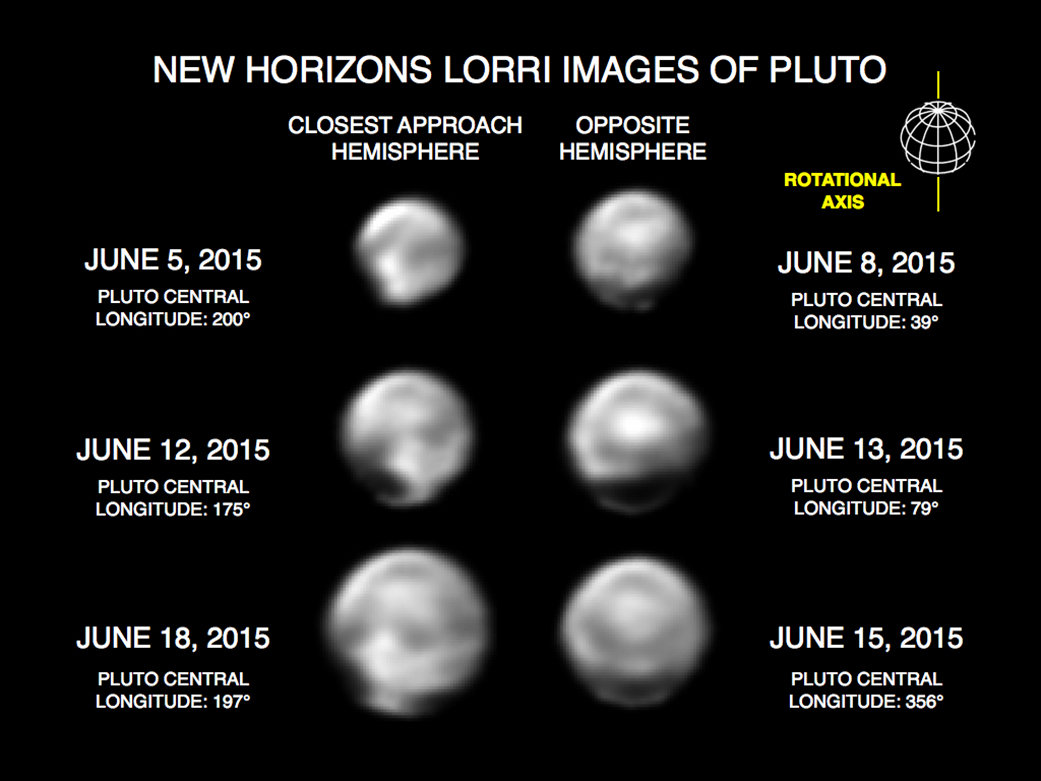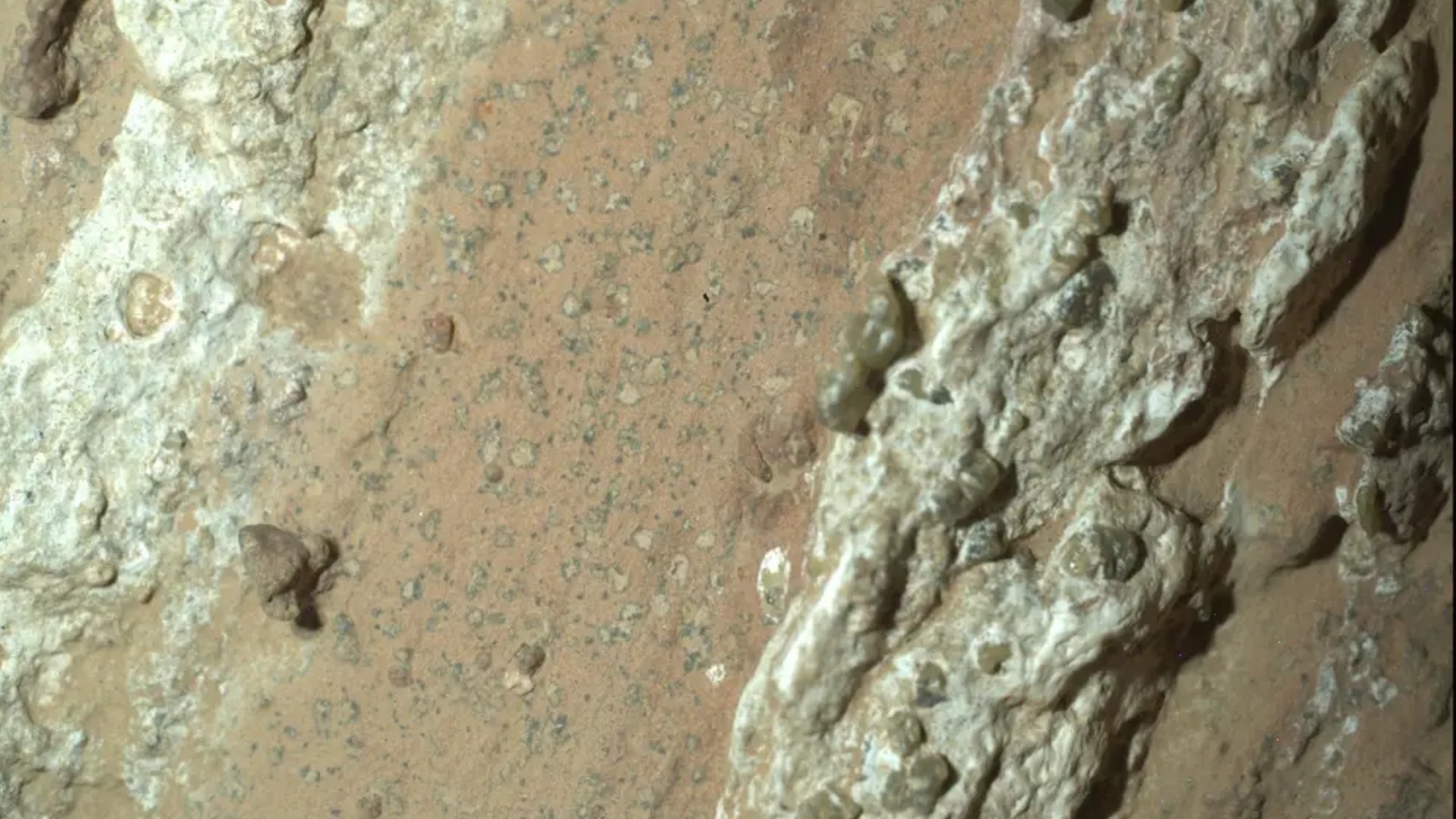Do Pluto and Charon Spout Icy Plumes?

When NASA's New Horizons mission flies past Pluto on July 14, it may see signs of plumes on the dwarf planet or its moon, Charon, or at least evidence of their past existence. A new study of similar objects in the outer reaches of the solar system suggests that both bodies have the potential to support eruptions of icy material.
"If cryo-volcanism occurs on Pluto less than once a Pluto year — 248 Earth-years — we're unlikely to see any signs of it," Marc Neveu, a doctoral candidate in astrophysics at Arizona State University, wrote in an email to Astrobiology Magazine. "On the other hand, Charon's surface could retain the memory of long-gone cryo-volcanic events, possibly as old as the moon itself."
Neveu served as lead author in a recent study of cryo-volcanism — the explosion of icy liquids — on the frozen rocks known as Kuiper-belt objects, or KBOs. [New Horizons Probe's July 14 Pluto Flyby: Complete Coverage]
The research was published online in the journal Icarus, and was supported by the NASA Astrobiology Institute node at Arizona State University.
Busting through the crust
Pluto and Charon are both classified as Kuiper-belt objects — icy bodies that have attributes of both asteroids and comets but don't quite fall into either category. These bodies lay at the outer edges of the solar system, making them a challenge to study from Earth.
"Tradition has led us to study comets or icy satellites, and not the in-between objects," said theoretical astrophysicist Steve Desch, also of Arizona State University. "But we're recognizing that KBOs have properties of both."
Desch served as co-author on the research, and is Neveu's primary advisor.
Breaking space news, the latest updates on rocket launches, skywatching events and more!
According to Neveu, the difference is primarily one of size. Large KBOs with a radius exceeding 125 miles (200 kilometers) can boast geological and interior processes similar to those of icy satellites. Pluto and Charon both fall into this dwarf-planet class. However, the majority of KBOs are within the far smaller 31 miles (50 km) range, more geologically similar to the potato-shaped comet nuclei or asteroids.
"We'll know soon whether this distinction makes any sense, as New Horizons should provide us with snapshots of KBOs of a variety of sizes," Neveu said.
On larger KBOs, such as Pluto and Charon, cryo-volcanism requires a liquid reservoir beneath the crust of the body. Pluto is thought to house a subsurface ocean, which would provide sufficient material, but even smaller pockets of liquid in the icy mantle could be enough to create large plumes. Another ocean may lie beneath Charon's crust. Other large KBOs could similarly house higher internal temperatures that might allow them to hold liquids beneath the surface.
But simply laying beneath the surface isn't enough. The liquid material must rise to the surface rapidly — within days, according to Desch — before it can freeze. Partial freezing of the sub-surface layer can make this happen.
When water freezes, the ice that forms takes up more space than the original liquid. The remaining liquid is compressed, keeping it under greater pressure. Eventually, the water becomes pressurized enough to break the walls of the reservoir containing it, creating a crack. Water moves into the crack, and the cycle begins again. As the fluid moves closer to the surface, the pressure is lower, allowing dissolved gases to separate out. Desch compares the process to an open can of soda.
"The bubbles of gas create a more buoyant fluid, creating a stress at the tip of the crack that widens it and allows fluid to ascend further," Desch said.
Eventually, the crack extends all the way to the surface and the liquid erupts.
"Innumerable shiny crystals"
Neveu and his colleagues concluded that large bodies like Pluto and Charon could boast erupting plumes similar to Saturn's moon Enceladus and the more recently suspected one on Jupiter's moon Europa. Signs of past eruptions could be difficult to observe, at least on Pluto.
"Pluto's surface appearance is likely to be reset every Plutonian year, as its atmosphere seems to partially freeze on the surface in the winter," Neveu said.
This reset would cover any traces of past cryo-volcanism on the dwarf planet.
However, Charon, which is nearly as large, could show traces that could indicate hints of frozen explosions in the past.
"I'd look for unusual color or chemical signatures around features that look like fractures, vents, or mounds," Neveu said.
If plumes are erupting as New Horizons travels through the system, the probe could easily capture signs of activity. Existing plumes could also help narrow down details about plume formation, Neveu said.
On Jupiter's moon Io, which is larger than Pluto, the relatively high gravity causes umbrella-shaped plumes. On Enceladus, a body smaller than Charon, the low gravity creates jets that merge into a plume similar in appearance to the tail of a comet.
"It would be very interesting to see for which body gravity plume shapes transition from umbrella to tail," Neveu said.
But don't worry. If Pluto boasts icy plumes, they are unlikely to damage the spacecraft. Neveu said that New Horizons should be flying far enough to avoid any plumes, while Desch points out that any material that managed to escape Pluto's gravity would be widely dispersed. Both pointed out that NASA's Cassini spacecraft flew through Enceladus' plume with no damage.
From the surface, the cryovolcanism on the small bodies would be an amazing sight.
"Imagine something shaped like an aurora borealis but coming out of the ground, and containing innumerable shiny crystals of ice shooting upward in seconds to a point so high above you that you can't see them anymore," Desch said. "It must look absolutely incredible if you're standing right there! I really hope we find some evidence of this."
Follow Nola Taylor Redd on Twitter @NolaTRedd.

Nola Taylor Tillman is a contributing writer for Space.com. She loves all things space and astronomy-related, and always wants to learn more. She has a Bachelor's degree in English and Astrophysics from Agnes Scott College and served as an intern at Sky & Telescope magazine. She loves to speak to groups on astronomy-related subjects. She lives with her husband in Atlanta, Georgia. Follow her on Bluesky at @astrowriter.social.bluesky



